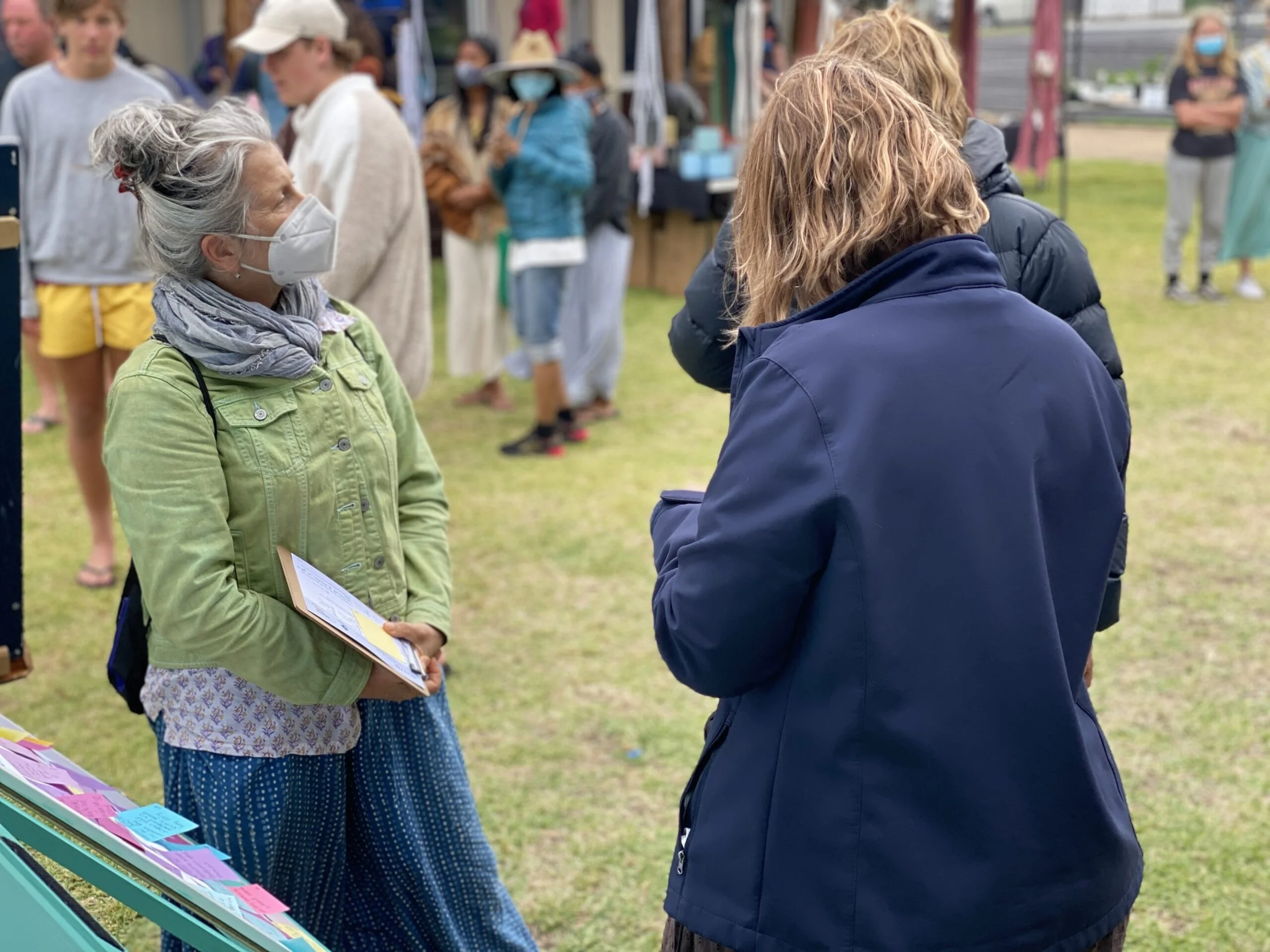3 Secrets to Inclusive Pop-up Engagements
Pop-up events take a project to the places and spaces your community already use. This is an opportunity to reach a broad sample of people, but only if they feel safe and welcome to participate.
Choose the right time and placeSometimes it’s not about choosing the busiest location. If you have identified groups of people who need more support to engage, consider booking a pop-up where they are likely to be and at a time they are likely to be there.
We’ve held pop-ups outside the school gates at pick-up time to talk with parents, early in the morning on ovals to reach dog-walkers, and on the common grounds of high-density public housing to reach people with lived experience of homelessness.
The secret is…
Find a convenient time and place for your community, then take the pop-up to them.
Inclusive engagement materialsWe spent more time editing this to remove words than we took writing them. Do the same for your engagement materials. Around 12% of Australians can only read brief texts on familiar topics or are unable to read at all.
We’ve designed visual surveys, talked people through project information, and used easy English. We love a well-designed infographic or thoughtful image to communicate complex ideas.
Choose images that reflect your diverse community. Remove words until you are left with the most important information. Print those words large and clear.
The secret is…
When you remove a barrier for some people, you remove it for many others.
Make the invisible visibleThe person at your pop-up doesn’t know you have a trauma-informed approach, will respect their pronouns, are qualified in mental health first aid and suggested this location because the first choice wasn’t culturally safe. We need to make the invisible, visible.
Our pop-up signage features the inclusive pride flag, First Nations flags, and “welcome” written in multiple languages. We’ve contacted community groups to invite them personally to pop-up events, to make it clear they are welcome. Our materials provide blank boxes to self describe gender and ‘prefer not to answer’ wherever we collect personal information.
All these little things signal that we have an inclusive attitude and inclusive practices. If you have worked hard to include a particular group of people, use your pop-up display to let them know.
The secret is…
Be proudly inclusive. Show it off to help people feel safe engaging with you.
Pop-ups become more inclusive every time you make a little change to help people participate. The biggest secret is that it’s not hard to be inclusive. You just have to keep making little changes.


